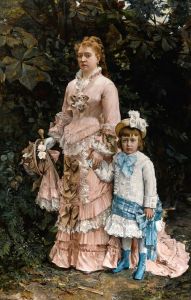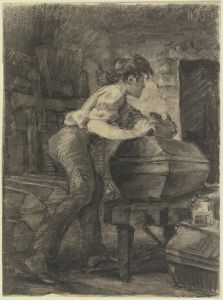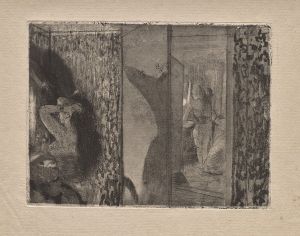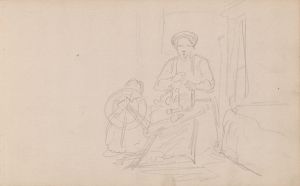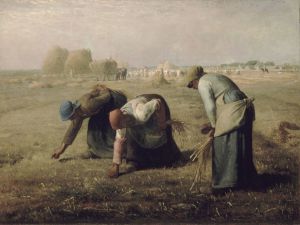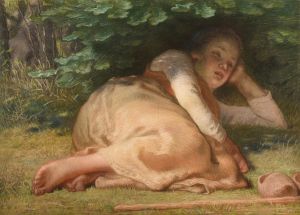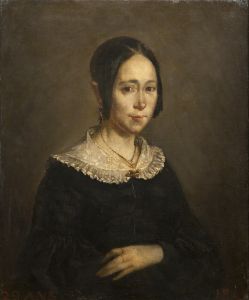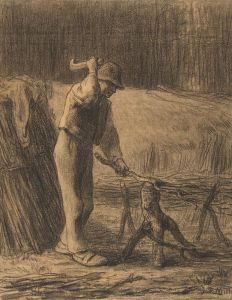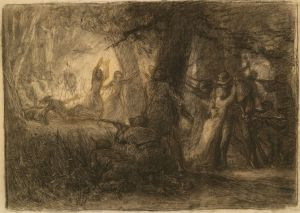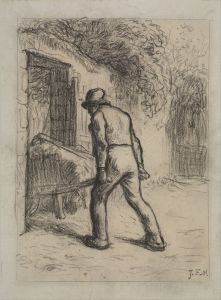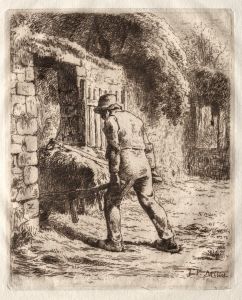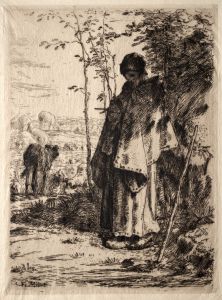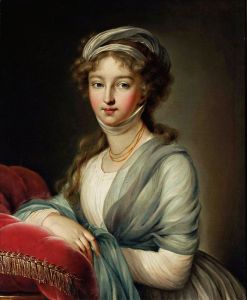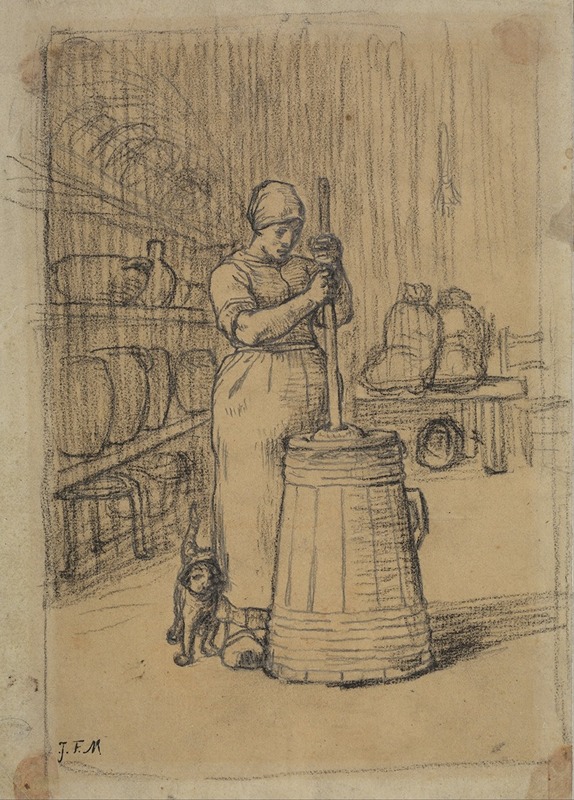
Study for Woman Churning Butter
A hand-painted replica of Jean-François Millet’s masterpiece Study for Woman Churning Butter, meticulously crafted by professional artists to capture the true essence of the original. Each piece is created with museum-quality canvas and rare mineral pigments, carefully painted by experienced artists with delicate brushstrokes and rich, layered colors to perfectly recreate the texture of the original artwork. Unlike machine-printed reproductions, this hand-painted version brings the painting to life, infused with the artist’s emotions and skill in every stroke. Whether for personal collection or home decoration, it instantly elevates the artistic atmosphere of any space.
Jean-François Millet, a prominent French painter and one of the founders of the Barbizon school, is renowned for his depictions of peasant life. One of his works, "Study for Woman Churning Butter," exemplifies his focus on rural themes and the everyday lives of the working class. Although not as widely known as some of his other paintings, this study provides insight into Millet's artistic process and thematic interests.
Millet was born in 1814 in the village of Gruchy, Normandy, into a family of farmers. His upbringing in a rural environment deeply influenced his artistic vision, leading him to portray the dignity and hardship of peasant life. By the mid-19th century, Millet had moved to Barbizon, a village near the Forest of Fontainebleau, where he became a central figure in the Barbizon school. This group of artists sought to break away from the formalism of academic art, focusing instead on naturalism and the depiction of rural scenes.
"Study for Woman Churning Butter" is a preparatory work, likely created as part of Millet's process in developing a larger, more detailed composition. As a study, it captures the essence of a woman engaged in the labor-intensive task of churning butter, a common activity in rural communities of the time. The study emphasizes the physicality of the task, with the woman's posture and the churn itself being central elements of the composition.
Millet's technique in this study reflects his broader artistic style, characterized by a focus on realism and an empathetic portrayal of his subjects. He often employed a muted color palette and soft, diffused lighting to convey the somber yet dignified atmosphere of rural life. In his studies, Millet would typically concentrate on the form and movement of his subjects, capturing the essence of their labor and the environment in which they worked.
The significance of "Study for Woman Churning Butter" lies in its representation of Millet's commitment to depicting the lives of ordinary people. During the 19th century, the Industrial Revolution was transforming society, and many artists turned their attention to the changing landscapes and urban environments. However, Millet remained focused on the countryside and the traditional ways of life that were increasingly under threat. His work is often seen as a response to the social and economic upheavals of his time, highlighting the resilience and enduring spirit of rural communities.
Millet's studies, including this one, were crucial in his artistic process, allowing him to explore composition, form, and the nuances of light and shadow. These preparatory works provided the foundation for his larger, finished paintings, which often conveyed a deeper narrative about the human condition and the relationship between people and their environment.
While "Study for Woman Churning Butter" may not be as famous as Millet's masterpieces like "The Gleaners" or "The Angelus," it remains an important piece within his oeuvre. It offers a glimpse into the artist's working methods and his dedication to capturing the essence of rural life. Through such studies, Millet contributed significantly to the development of realism in art, influencing subsequent generations of artists who sought to portray the world with honesty and empathy.
In summary, "Study for Woman Churning Butter" is a testament to Jean-François Millet's skill as an artist and his deep connection to the rural world. It reflects his broader themes of labor, dignity, and the timeless rhythms of country life, securing his legacy as a pivotal figure in 19th-century art.





